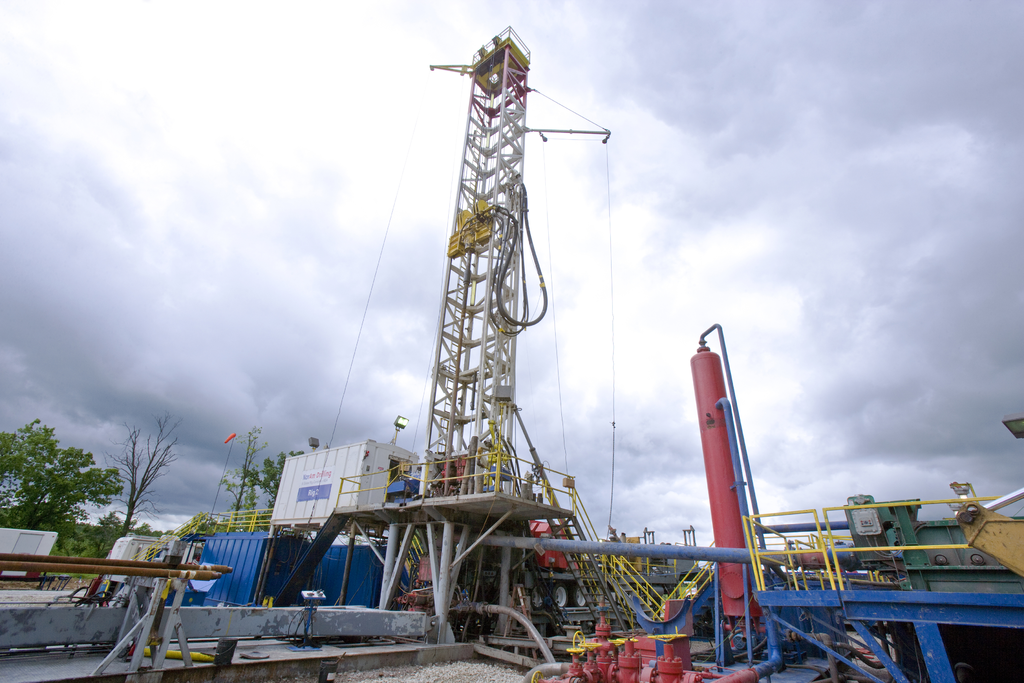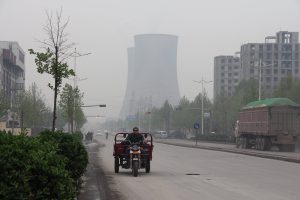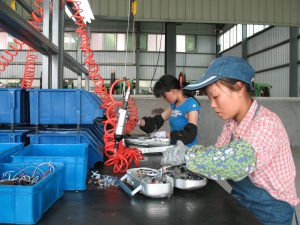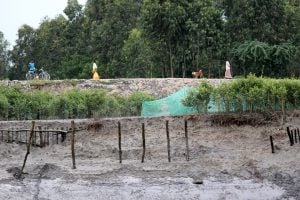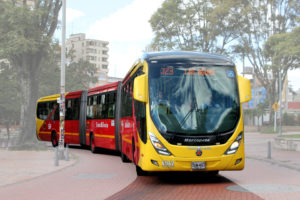The UN Intergovernmental Panel on Climate Change (IPCC) issued its starkest warning yet on the urgency of tackling global warming in its “Special Report on Global Warming of 1.5C,” saying that only 12 years remain to keep warming within that limit.
“Warming greater than the global annual average is being experienced in many land regions and seasons,” the report said. Average global temperatures are already 1C above pre-industrial levels, with impacts that “will persist for centuries to millennia.”
The IPCC forecast, with “high confidence”, that 1.5C would be reached between 2030 and 2052.
However, it could get much worse. Rapid, far-reaching and unprecedented changes to all aspects of society are needed if global warming is to be limited to 1.5C, according to the report’s summary for policymakers.
“We usually think the aim of international action on climate change is to avoid catastrophic risk. The IPCC’s report warns of how real that risk is, and that we should get to zero net emissions as soon as possible,” said Hu Min, executive director of the Innovative Green Development Program (iGDP), an NGO.
Halting higher emissions
Global emissions must start to decline before 2030 to keep warming within 1.5C without reliance on carbon dioxide removal. However, current carbon intensity data indicates this is almost impossible, so large-scale removal of carbon dioxide will be needed to balance out emissions.
The report says it will be necessary to remove 100 to 1,000 gigatons of carbon dioxide from the atmosphere during the 21st century to keep warming to 1.5C target. No single approach to carbon dioxide removal (CDR) can do this. The options include afforestation and reforestation, land restoration, soil carbon sequestration and carbon capture and storage (CCS).
The IPCC’s report emphasised CDR as there is no other choice, according to Chen Ying, a researcher at the Sustainable Development Economics Laboratory, part of the Chinese Academy of Social Sciences (CASS) Institute for Urban and Environmental Studies, speaking to chinadialogue.
The report provides four illustrative pathways (see below) to the 1.5C target, indicating the different contributions from sources of carbon emissions or carbon capture over time. (The grey areas show emissions from fossil fuels and industry; brown areas, carbon emissions or capture by agriculture, forestry and other land uses; yellow areas, carbon capture by bioenergy plus carbon capture and storage.)
The last three scenarios all involve increasing use of carbon CCS over time.
Nature versus technology
CDR (such as afforestation and soil carbon sequestration) mainly involves ways of absorbing carbon from the atmosphere. But carbon capture and storage technologies (CCS) work differently. They capture carbon from industrial emissions, especially where there are higher concentrations of carbon dioxide to make the complex process easier.
CCS is essentially an emissions reduction technology. In China, CCS developers have added an extra step – utilisation – to this emerging technology, known by the acronym CCUS. The aim is to turn carbon into a resource that enhances profitability.
CCUS trials are mostly in the energy sector, for instance, in oil extraction and power generation. The hope is that in future CCUS could be combined with bioenergy, or that technologies capable of removing carbon dioxide directly from the atmosphere can be developed.
Will China bet on CCUS?
CCUS remains a trial technology. China built its first large-scale demonstration plant in 2017 in Yulin, Shaanxi province, in the country’s northwest, as one of the outcomes of the China-US Joint Statement on Climate Change.
The project will capture 410,000 tonnes of carbon a year. It combines CCS with enhanced oil recovery (EOR), a system in which carbon dioxide is captured from a coal-fired power plant and injected into oil fields to boost levels of oil recovery. The gas is stored underground and thereby removed from the atmosphere.
The National Development and Reform Commission (NDRC) has identified the thermal power generation, coal-chemical, concrete and steel sectors as suitable for CCUS trials. And China’s state-owned oil giants are getting more interested – CNPC and Sinopec both have dedicated research bodies looking at the possibilities.
Large-scale CCS projects in China
 (Data from the Global CCS Institute)
(Data from the Global CCS Institute)
In September, China’s Ministry of Ecological and Environmental Protection and its South African counterpart signed a memorandum of understanding on cooperation in the climate change sector, under which the two countries will partner on the construction of climate-friendly energy projects, with priority given to CCUS.
Jiang Kejuan, a senior researcher with the NDRC’s Energy Research Institute and contributor to the IPCC report said that the China-South Africa partnership might build demonstration projects similar to the one at Yulin.
During her visit to Beijing, South Africa’s then Minister of Environmental Affairs, Edna Molewa, said that “carbon capture is hugely expensive and we need more research and development into this cutting-edge technology”.
Jiang said there is huge potential to increase efficiency and reduce costs.
Liu Qiang, head of the energy research office at the CASS Institute of Quantitative and Technical Economics, said that in economic terms there is no market for CCS, and that any market created or price paid will arise from policy efforts to tackle climate change.
CCUS projects focus on finding commercial uses for carbon dioxide to offset the huge costs of carbon capture.
The most common approaches used in China’s CCUS projects are enhanced oil recovery (EOR), and enhanced coal bed methane recovery (ECBM). The gas is liquified and injected into oil or methane reservoirs exhausted by conventional extraction. The carbon dioxide drives residual oil or methane to the surface, increasing extraction rates, then remains sequestered underground.
According to the Asia Development Bank, EOR could be a good option for many Chinese oil fields, which are already seeing or will soon see falling output.
However, the economic feasibility of EOR depends upon the cost of the carbon dioxide and the selling price of the recovered oil. The ADB’s analysis found that demonstration projects would need to have a large-scale coal-chemical plant nearby producing high concentrations of carbon dioxide – at least 100,000 tonnes a year, and ideally 1,000,000 tonnes. It suggests the extra oil produced by EOR can provide cashflow for ongoing purchase of carbon dioxide.
Costs, and few benefits?
Analysts disagree over whether CCUS has any environmental benefits. Some have pointed out that as the extra fossil fuels obtained will ultimately be burned, CCUS cannot be seen as a solution to climate change.
Zhu Weiqun, a professor at Shandong University’s School of Chemistry and Chemical Engineering, has said that CCUS will increase energy consumption by 25-40% and about two thirds of the carbon dioxide used in EOR will return to the surface, making it unsuitable for long-term sequestration.
Long-term security of sequestered carbon has always been a risk. According to the ADB, rigorous environmental impact assessments (EIAs) and environmental protection plans are essential, along with monitoring and verification equipment. If CCUS is to be implemented more widely, standards will need to be developed for site selection, site grading, environmental impact assessments and long-term stability (China is earthquake prone).
CCUS projects also require water for industrial cooling, but water shortages are already set to be one of China’s biggest challenges over the next 10-15 years – particularly in the west and north-west, where the coal industry is concentrated.
Speeding up?
Jiang thinks urgency over mitigating the greenhouse effect will mean CCUS technologies will be given more market value (depending on policy measures and carbon pricing). The British Geological Survey has pointed out that the viability of CCS globally is dependent on the value and price placed by people and governments on the environment and ecosystems.
In theory, profits could be made from captured carbon dioxide by using it for EOR, or by selling emission rights, thus cancelling out the initial investment and running costs.
But China’s carbon markets remain in their infancy and carbon prices are too low to effect emissions behaviour, so cooperation between carbon suppliers and carbon consumers will require individual negotiations.
Jiang thinks the government will need to supply funding and support to early demonstration projects to ensure eventual commercial viability.
Clean energy
However, all the Chinese experts we spoke to agree that an energy transition is more effective than CCUS in terms of tackling global warming, even if the technology is an essential choice in the near term. “Even in coal-powered countries, like China and South Africa, the most effective, cheapest and impactful option remains widespread energy saving,” said Liu.
According to Hu, there is also still potential to reduce warming from other greenhouse gases, such as hydrofluorocarbons and methane through giving serious attention by replacing refrigerants, cutting food consumption and even changing eating habits.
“It’s not possible to achieve a carbon neutral future without major changes to our lifestyles,” she said.
